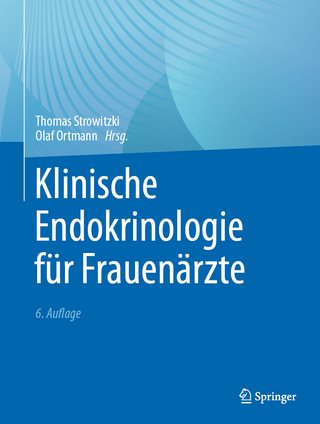
Handbook of Obesity -- Volume 1
CRC Press (Verlag)
978-1-84214-556-2 (ISBN)
- Titel erscheint in neuer Auflage
- Artikel merken
History, Definitions, and Prevalence: Changes over time surrounding our notion of obesity, adiposity traits, and the epidemiology of obesity in various populations
Biological Determinants of Obesity: Genetic and epigenetic evidence, fetal life and postnatal influences, the use of animal models in research, endocrine issues, molecular aspects, and issues related to viral infection and adiposity
Behavioral Determinants of Obesity: The effects of food and ingestive behavior, smoking, breastfeeding, sleep duration, work/leisure time activity, and sedentary behavior
Environmental, Social, and Cultural Determinants of Obesity: The role of agriculture and the food industry, the urban environment, social and economic aspects, cultural factors, environmental pollutants, and economic costs
Consequences of Obesity: How excess weight affects and exacerbates a range of comorbid conditions, including diabetes, cardiovascular disease, pulmonary disorders, arthritis, and cancer
This volume assembles the work of worldwide experts to deliver an up-to-date survey of the most essential information related to the causes of the obesity epidemic.
George A. Bray, MD, MACP, MACE, is a former executive director and current Boyd Professor at Pennington Biomedical Research Center of the Louisiana State University System in Baton Rouge, Louisiana. He is also a professor of medicine at the Louisiana State University Medical Center in New Orleans, an adjunct professor of physiology in the School of Veterinary Medicine, and an adjunct professor of food science in the College of Agriculture at Louisiana State University. His research focuses on physiological mechanisms for obesity and the evaluation of treatment for obesity and diabetes. Claude Bouchard, PhD, is a former executive director and current John W. Barton, Sr. Endowed Chair in Genetics and Nutrition at the Pennington Biomedical Research Center of the Louisiana State University System in Baton Rouge, Louisiana. His research focuses on the genetics of obesity and its comorbidities, as well as on the genetics of adaptation to regular exercise in terms of cardiovascular and diabetes risk factors.
History, Definitions, and Prevalence. Obesity Has Always Been with Us: An Historical Introduction. Measurement of Total Adiposity, Regional Fat Depots, and Ectopic Fat. Anthropometric Indicators in Relation to the Gold Standards. Worldwide Prevalence of Obesity in Adults. Prevalence and Consequences of Pediatric Obesity. Obesity in Older Adults in the United States. Gender, Ethnic, and Geographic Variation in Adiposity. Biological Determinants of Obesity. Genetic Component to Obesity: Evidence from Genetic Epidemiology. Genes and the Predisposition to Obesity. Epigenetic Mechanisms in Obesity. Fetal and Early Postnatal Life Determinants of Adiposity. Animal Models of Obesity: Perspectives on Evolution of Strategies for Their Development and Analysis of Their Phenotypes. Animal Models of Obesity: Nonhuman Primates. CNS Regulation of Energy Balance. Gastrointestinal Regulation of Energy Balance. Gut Microbiome and Obesity. Sympathetic Nervous System and Endocrine Determinants of Energy Balance. Insulin Resistance and Obesity. White and Brown Adipose Tissue Development. Adipose Tissue Metabolism, Adipokines, and Obesity. Visceral Adipose Tissue and Ectopic Fat Deposition. Skeletal Muscle Metabolism and Obesity. Mitochondrial Bioenergetic Aspects of Obesity and Weight Loss. Resting Metabolic Rate, Thermic Effect of Food, and Obesity. Energy Cost of Exercise, Postexercise Metabolic Rates, and Obesity. Energy Partitioning, Substrate Oxidation Rates, and Obesity. Viral Infections and Adiposity. Behavioral Determinants of Obesity. Obesity: Influence of the Food Environment on Ingestive Behaviors. Obesity and Related Eating Disorders. Tobacco Use, Smoking Cessation, and Obesity. Breastfeeding and Later Obesity. Beverages and Obesity: Biology, History, Trends. Sedentary Time and Obesity. Occupational Work and Obesity. Leisure-Time Physical Activity and Obesity. Sustained Short Sleep and Risk of Obesity: Evidence in Children and Adults. Environmental, Social, and Cultural Determinants of Obesity. Role of Agriculture and the Food Industry in America’s Obesity. Transportation Policies and Obesity. Urban Environment, Building Design, and Obesity. Social and Economic Determinants of Obesity. Influence of Culture on Obesity. Bias, Discrimination, and Obesity. Environmental Chemicals and Obesity. Economic Costs of Obesity. Consequences of Obesity. Obesity and Mortality Rates. Obesity and Heart Disease. Obesity and Hypertension. Obesity and Lipoprotein Metabolism. Obesity and Type Diabetes. Obesity and Metabolic Syndrome. Obesity and Cancer: Clinical Epidemiology. Inflammatory Causes of Obesity and Metabolic Diseases. Obesity and Gallbladder Disease. Obesity and Liver: Cell Death, Compensatory Growth, and Repair of Damage. Obesity, Lung Function, and Lung Disease. Obesity, Arthritis, and Gout. Obesity and Mental Health. Obesity and Health-Related Quality of Life. Obesity and Pregnancy Outcomes. Obesity, an Inactive Lifestyle and Low Fitness: The Most Unhealthy Combination. Index.
| Erscheint lt. Verlag | 10.2.2014 |
|---|---|
| Verlagsort | London |
| Sprache | englisch |
| Maße | 210 x 280 mm |
| Gewicht | 2242 g |
| Themenwelt | Medizin / Pharmazie ► Gesundheitsfachberufe ► Diätassistenz / Ernährungsberatung |
| Medizinische Fachgebiete ► Innere Medizin ► Endokrinologie | |
| Medizinische Fachgebiete ► Innere Medizin ► Kardiologie / Angiologie | |
| Studium ► 1. Studienabschnitt (Vorklinik) ► Biochemie / Molekularbiologie | |
| ISBN-10 | 1-84214-556-8 / 1842145568 |
| ISBN-13 | 978-1-84214-556-2 / 9781842145562 |
| Zustand | Neuware |
| Informationen gemäß Produktsicherheitsverordnung (GPSR) | |
| Haben Sie eine Frage zum Produkt? |
aus dem Bereich



